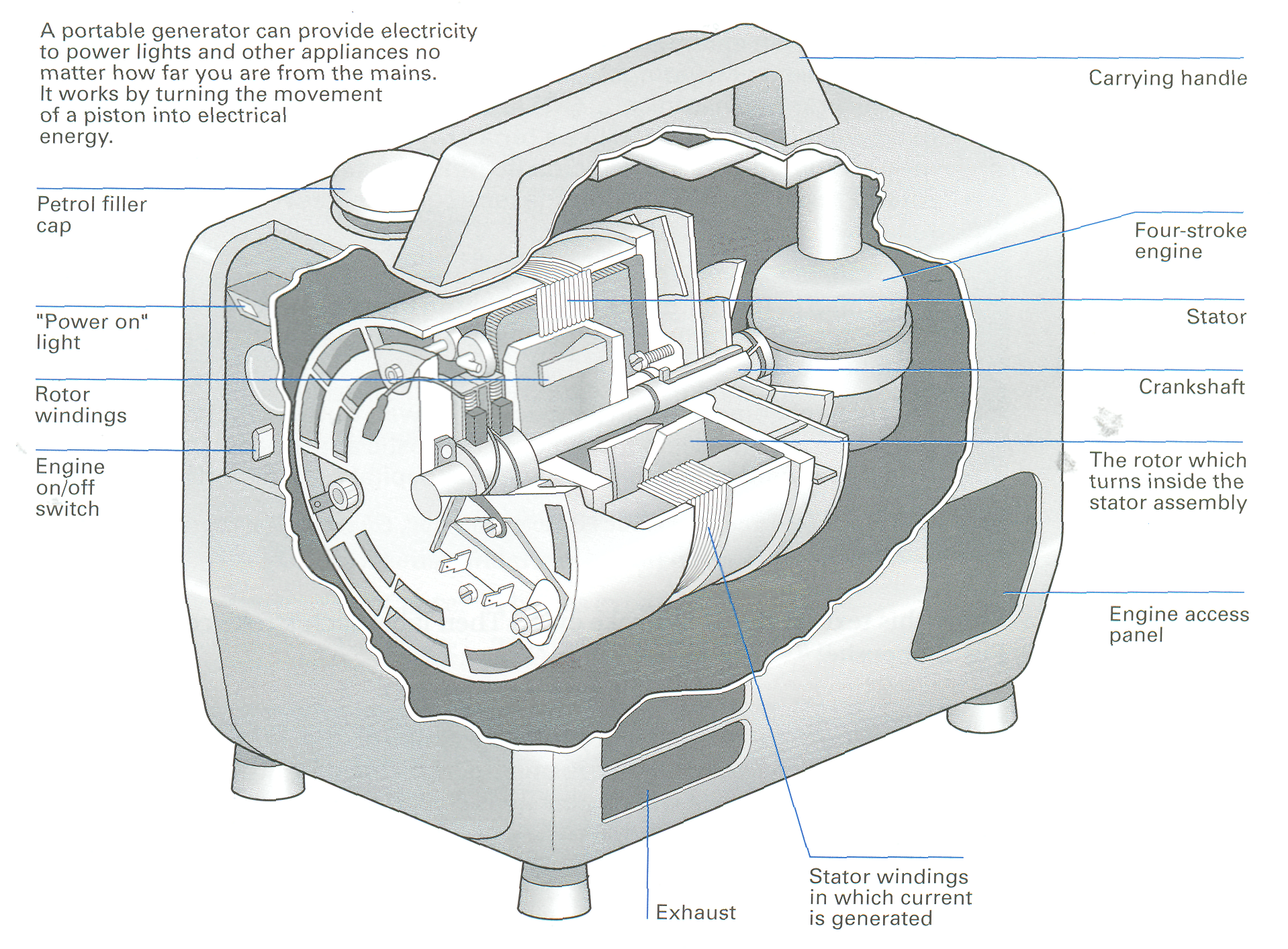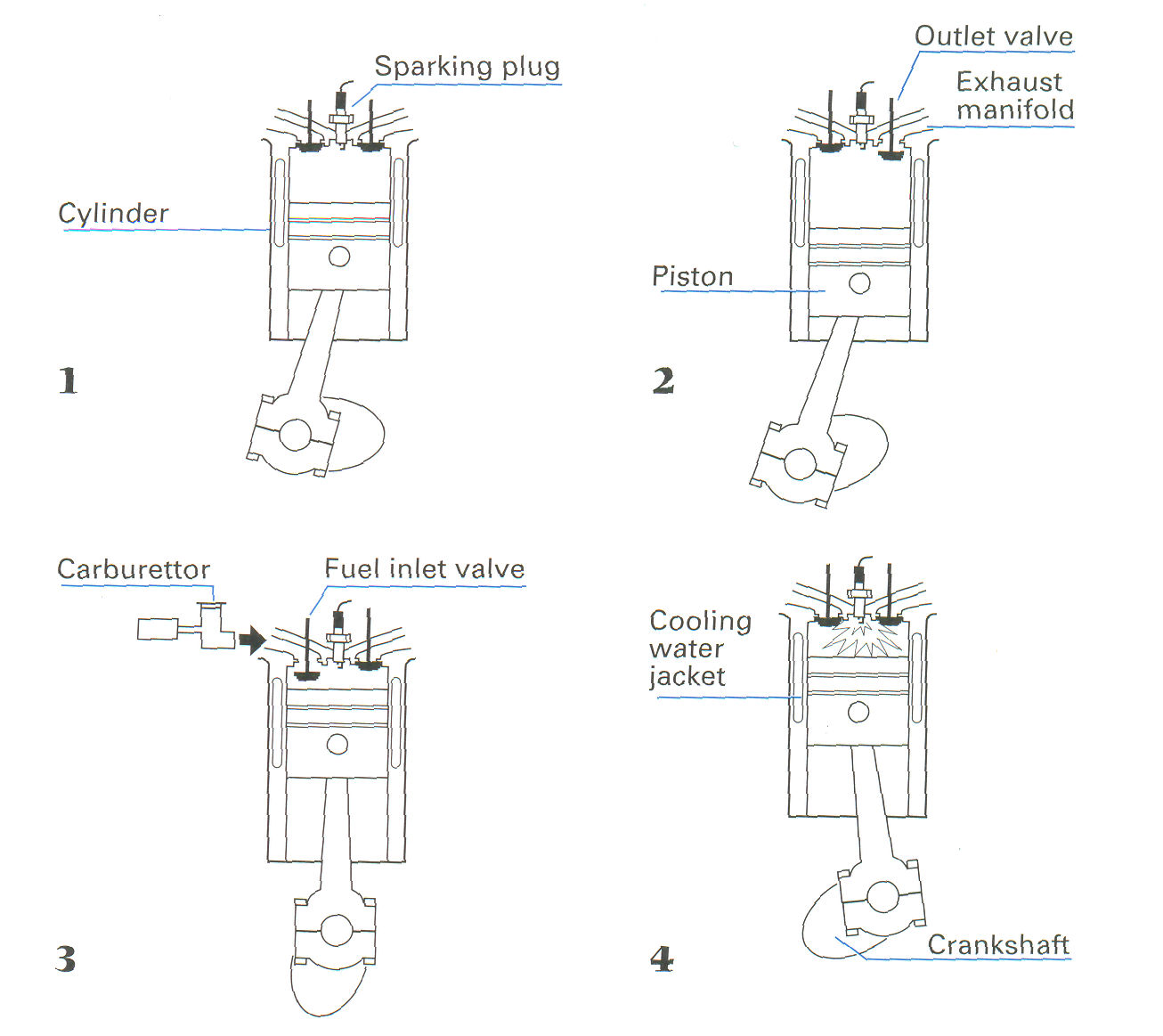
- •1. Sort the fuels and energy sources below in the correct category.
- •2. Match these different power plants to their descriptions.
- •3. Read the text and answer the questions. Use these questions as a plan to retell the text.
- •4. Complete the word families in the table below.
- •5. Choose the correct form of the Infinitive.
- •6. Translate into English. Mind the syntactical functions of the Infinitive.
- •7. Study the diagram below of a portable generator. Answer these questions using the
- •8. Read the text to check as many of the answers as you can. You will not find complete
- •9. Study this text on the four-stroke cycle. Then label each stroke correctly in Fig. 2
- •11. Translate the sentences. Pay attention to the use of the Complex Object.
- •12. Use the correct form of the Infinitive in brackets. Translate the sentences. Pay attention to the use of the Complex Subject.
- •13. Listen to a phone call between a journalist, Colin Maitland, and the public relations officer of the company elec, Maria Berger. Complete the journalist’s notes.
- •14. Read what people say about different fuels and energy sources. Which paragraph is
- •15. Say which of the above statements you agree with. Use phrases below.
- •16. Work with a partner. How do you rate these different types of power plant on a scale
- •19. Find equivalents of the following phrases in the texts “Electricity Generation” and “Portable Generator”. Then use these phrases to make your own sentences.
- •20. Translate the text from Russian into English.
- •21. Translate the text from English into Russian.
7. Study the diagram below of a portable generator. Answer these questions using the
diagram and your own knowledge of engineering.
1) What are its main parts?
2) What does the engine run on?
3) What are the four strokes called?
4) What is the function of a crankshaft?
5) What do both stator and rotor have?
6) What is the difference between stator and rotor?

Fig. 1
8. Read the text to check as many of the answers as you can. You will not find complete
answers to all the questions.
PORTABLE GENERATOR
Although most electricity comes from power stations, power can also be generated by far smaller means. Nowadays, electricity generators can be small enough to hold in the hand.
Portable generators are made up of two main parts: an engine, which powers the equipment, and an alternator, which converts motion into electricity.
The engine shown (Fig.1) runs on petrol. It is started by pulling a cord. This creates a spark inside which ignites a fuel mixture. In a typical four-stroke engine, when the piston descends, the air inlet valve opens and a mixture of air and petrol is sucked in through a carburetor. The valve closes, the piston rises on the compressor stroke and a spark within the upper chamber ignites the mixture. This mini-explosion pushes the piston back down, and as it rises again the fumes formed by the ignition are forced out through the exhaust valve. This cycle is repeated many times per second. The moving piston makes the crankshaft rotate at great speed.
The crankshaft extends directly to an alternator, which consists of two main sets of windings – coils of insulated copper wire wound closely around an iron core. One set, called stator windings, is in a fixed position and shaped like a broad ring. The other set, the armature windings, is wound on the rotor which is fixed to the rotating crankshaft. The motor makes about 3,000 revolutions per minute.
The rotor is magnetized and it spins round, electricity is generated in the stator windings through the process of electromagnetic induction. The electric current is fed to the output terminals or sockets.
This type of generator can produce a 700 watt output, enough to operate lights, television, and some domestic appliances. Larger versions provide emergency power to hospitals and factories.
9. Study this text on the four-stroke cycle. Then label each stroke correctly in Fig. 2
In the four-stroke cycle, the piston descends on the intake stroke, during which the inlet valve is open. The piston ascends on the compression stroke with both valves closed and ignition takes place at the top of the stroke. The power or expansion stroke follows. The gas generated by the burning fuel expands rapidly, driving the piston down, both valves remaining closed. The cycle is completed by the exhaust stroke, as the piston ascends once more, forcing the products of combustion out through the exhaust valve. The cycle then repeats itself.

Fig. 2
Use of English 2: vocabulary Word Building |
10. Rewrite these sentences replacing the phrases in italics with appropriate -ize/-ise verbs (as a rule, -ize is an American variant, -ise is mostly British; to be sure, look up the word in a dictionary).
Study the example:
The rotor is made magnetic. – The rotor is magnetized.
1. Some cars are fitted with a security device which makes the engine immobile.
2. In areas where the power supply fluctuates, for sensitive equipment a device to make the
voltage stable is required.
3. Manufacturers seek to keep costs to a minimum and profits to a maximum.
4. Most companies have installed computers to control their production line.
5. Companies may make their operation more rational by reducing the variety of products
they make.
Use of English 2: grammar The Infinitive Constructions |
